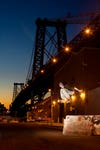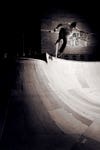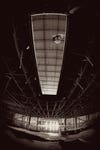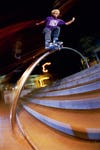I, Photographer: Skateboard Shooter
Jonathan Mehring travels the world of skating
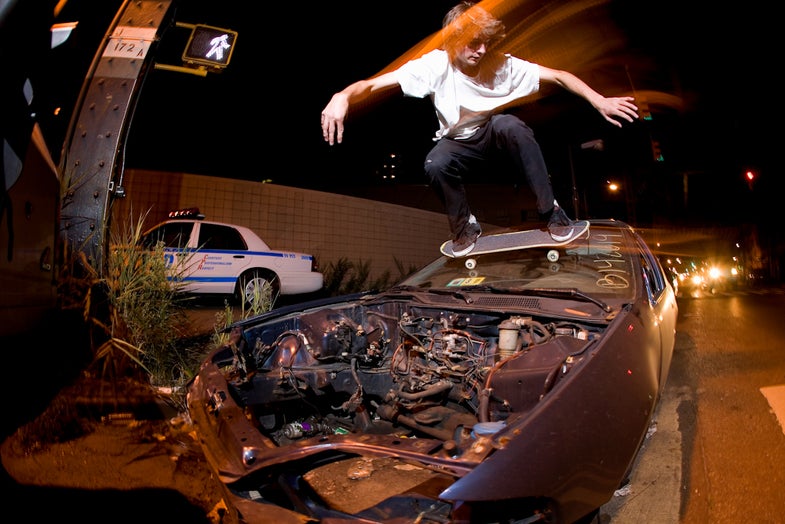
You make a living this way?
It’s my bread and butter. I’m a freelance photographer for Skateboarder. I also do some work for foreign skate magazines and music photography of friends’ bands. I shot the South By Southwest festival for the AP this year, and I do some skate-related advertising work for brands like Converse, Nike, and Red Bull.
**Are you a skater, too? **
I started in 6th grade, so I’ve been doing it for about 20 years.
**You use a lot of high-contrast black-and-white and fisheye lens distortion. How come? **
Higher contrast and black-and-white are my personal style for some photos, while fisheye is pretty universal for this kind of action. There are also some rules. For example, you can always tell if a skateboarding photographer shot an image—other people chop off the ground or don’t get enough of where the skater is coming from and going to land, which shows how difficult the trick is.
**What gear do you shoot with? **
I use a Nikon D3 and FE2. For lenses, I use a 16mm fisheye for tricks, 24–70mm and 80–200mm Nikon zooms, and a few prime lenses like a 50mm and a 28mm. I leave the big ones at home when I travel. I use two or three Nikon flashes on stands for most shots, but size is a huge issue since we usually skate from spot to spot in each city and I have to carry all my gear in a backpack on my board.
**How do you find locations? **
I try to stay away from skate parks, because they aren’t always aesthetically pleasing. Also, street skating leaves a lot more to the individual’s creativity. I produce a lot of my own trips, like a recent one to several cities along the Amazon, where we spent a week traveling on a riverboat. Local skaters show us good spots, or we drive or skate around looking for a good spot to do a trick—you edit as you scout. For many small spots the fisheye is useful, because you can use it to make the space look a lot bigger than it actually is.
**What are the other challenges? **
The sun and motion blur are big problems. You have to know your flash duration, and you often have to pan with the skater. You can’t bracket—you have to nail it every time because if the guy lands a dangerous trick, you can’t always ask them to do it again. The trick has to look legitimate in the photo.
**What’s next for you? **
I’ve gotten interested in photojournalism in the past few years. I’ve been shooting the tricks for so long that it doesn’t challenge me as much, but the photojournalistic side does, and that’s what inspires me to travel. I also like introducing places that the skater community hasn’t seen—like Siberia.
